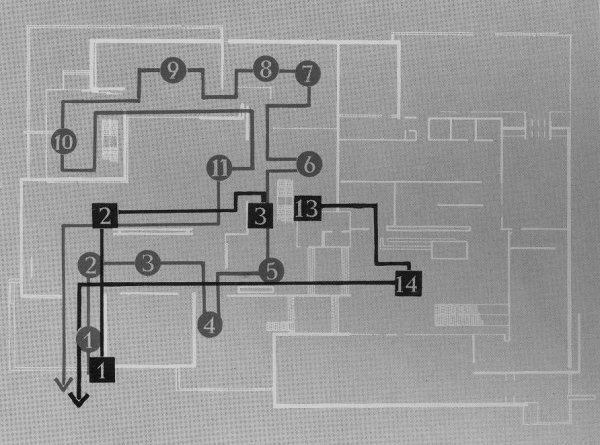
- The Pavilion of Spain offers
visitors a complete and exceptional sample of the history of
Spanish Art. Thirty centuries of artistic creation, from the
Tartessian Treasure, the Visigothic Jewels and the Romanesque
to the new art of 1965, have produced the masterpieces which
on this unique occasion can be admired in the art galleries of
the Pavilion.
-
- Three great landmarks of artistic
creation can be seen in these halls. The unique works of Catalan
Romanesque (panels, sculptures, canvases) and Visigothic jewels;
the insuperable mastery of El Greco, Zurbaran, Ribera, Velazques
and Goya in a miraculous synthesis only comparable to the ancient
Spanish School of Painting; and the revolutionary and inexhaustible
production of Pablo Picasso and his endless school of converts,
now masters of contemporary universal art.
-
- This great present-day painting
of which Spain has such outstanding creators is represented in
the Pavilion by 28 works of Pancho Cossio's, to be followed by
a monographic exhibition devoted to the Spanish landscape with
all the great modern masters of the speciality: Palencia, Vazquez
Dias, Vaquero Palacios..., and the most outstanding of the contemporary
school.
-
- This fine artistic itinerary
is rounded off by the bust of the Emperor Charles V by Leoni,
drawings by Garcia Lorca and Gregorio Prieto, sculptures by Dali
and Comendador, and the works of art that form part and parcel
of the very architecture of the Pavilion of Spain: the railing
by Amadeo Bavino, the sculptures by Serrano and Jose Luis Sanchez,
the lattices by Labra, the stained glass windows by Molezun and
the large murals by Vaquero Turcios.
|
-
DESCRIPTION
| 1. |
Main Entrance. The great
iron gate. A sliding gate, 27 feet long and 5 feet high, guarding
the entrance to the pavilion, provides a dramatic, abstract example
by sculptor Amadeo Gavino of Spain's celebrated wrought-iron
work. |
|
|
|
|
| 8. |
Museum Hall. Triptych
The Painter and his Model, by Pablo Picasso. The Dollar
Apotheosis, by Salvador Dali, Painting by Miro, Symbolic
Compositions (rommanesque art). St. Anne, Virgin and child
(Anonymous). |
Picasso: The painter and his model.
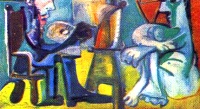 |
Miro: Fragment of a ceramic mural.
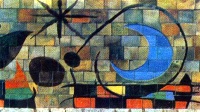 |
Dali: Jewel.
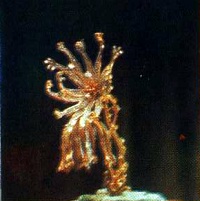 |
|
|
| 3. |
Discovery
Hall. Giant
murals by Vaquero Turcios, depicting Spanish faith, culture and
the evangelization of the Americas, decorate the walls. Armours
s. XVI; Horse's Harnesses; Navigation Instruments; The Story
of the Conquest of Mexico by Hernan Cortes; Geographical
Summary, by Fernandez de Enciso; busts of Pizarro and Hernan
Cortes. The caravel Santa Maria; two maps of America. |
- For many centuries Spanish arms
and armour have had the reputation of being unsurpassed in both
the Old World and the New. The Army Museum in Madrid has lent
for exhibition in the Pavilion of Spain a collection of typical
examples of the Spanish art of making steel weapons.
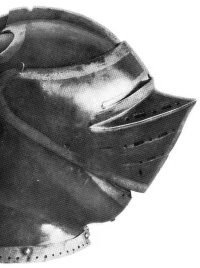 |
Above: Helmet. Below: Head-piece
for a horse.
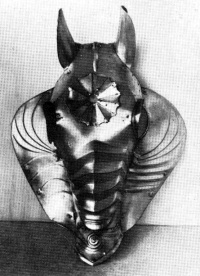 |
Gauntlet with six joints.
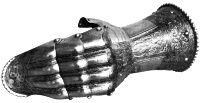 |
|
| 9. |
The Small
Prado Museum. Paintings
by five immortal artists are on display: El Greco: The
Annunciation; The Baptism of Christ; Ribera:
Martyrdom of St. Bartolomew; Zurbaran: St. Carmelo;
Still Life of Metais; Velazquez: Portrait of
the Cardinal Princess, Goya: The Crockery Dealers;
Lady and the cloaked Men; Portrait of Cabarrus. |
El Greco: The Annunciation,
Balaguer Museum, Villanueva y Geltru.
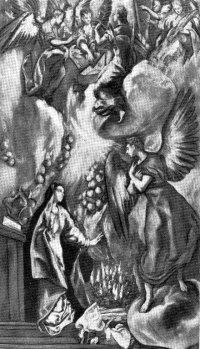 |
Zurbaran: Metals Still-life,
Col. Bertran Guell.
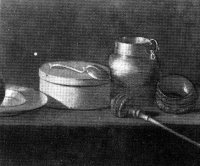 |
Rivera: Martyrdom of St. Bartholemew,
Prado Museum.
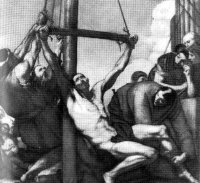 |
Velazquez: The Infante Cardinal,
Prado Museum.
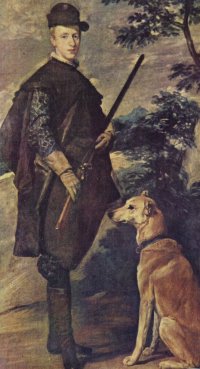 |
Goya: The crockery seller,
Prado Museum
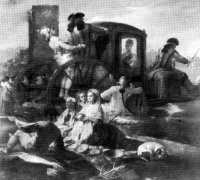 |
|
| 4. |
The Queen's
Garden. The
welcoming figure. A six-foot statue of Isabel la Catolica, first
Queen of a united Spain and patron of Columbus, stands in front
of the pavilion. It was cast in bronze by sculptor Jose Luis
Sanchez. |
|
| 10. |
Museum of
Romanesque Art. Calvary.
Crowned Crucifix. St. Anne. Virgin and Child. Calvary Virgin.
Bishop and Deacon. St. Peter. Crowning of St. Peter. The Immaculate
Conception. |
Romanesque Art.
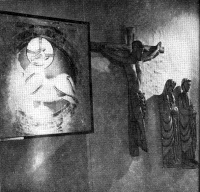 |
|
|
| 5. |
Hall of Honor. Mural
of the Iberian peoples. Bust of the Emperor Charles V, by Leone
Leoni. Tartessian Treasure of Carambolo and Visigothic Jewels
of Guarrazar; Casuble of Cardinal Cisneros. Duran Codex,
Sword of Charles V. |
Leoni: Silver Bust of the Caesar,
Charles V. The Santa Cruz Museum, Toledo.
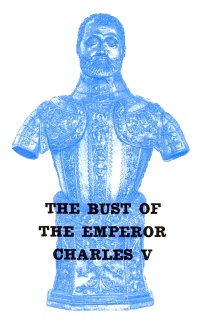 |
Detail of the Armour.
 |
The treasure of Guarrazar (Toledo)
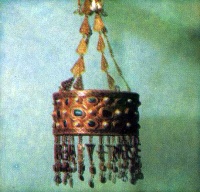 |
The treasure is one
of the best examples of the art of the Visigoths that spread throughout
Spain until the Moorish invasion. The originals of this treasure,
which are on show at the Archaeological Museum of Madrid, were
found in 1858 in the same way as other jewels of Visigothic craftsmanship
hidden at the time the Arabs swept through the land in the year
709.
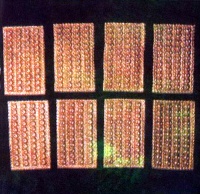 |
|
| 11. |
El Patio. Mural
The Colonization, by Vaquero Turcois. Ceramic Mural Homage
to Gaudia, by Cumella. Lattice by Labra. Statue of Friar
Junipero Serra, by Serrano. |
|
|
| 6. |
The Spanish Peoples
Salon. Craftsmanship, silver and goldwork, ceramic, china,
miniatures... |
Spanish People's Salon.
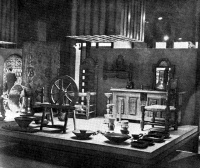 |
|
| 12. |
Mural-collage. Restaurant
Granada, by Francisco Ferraras and R. Domingo.
The Cuadrillas, by Daniel Vazquez Diaz, private dining
room of the Commissioner.
Drawings by Garcia Lorca and Gregorio Prieto.
Garcia Lorca: Drawing.
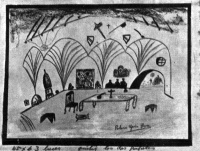 |
The Adelantado of Florida,
Hernando de Soto. Statue
by Perez Comendador. outside courtyard.
Photographs by Gyenes.
Gyenes: Andres Segovia.
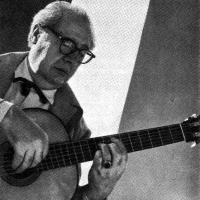 |
45 minutes.
Length of tour: Approximately.
Hours: 10 a. m. 10 p. m.
|
|
|
|
- Source: 1965 Guide
- Pavilion of Spain

|
|